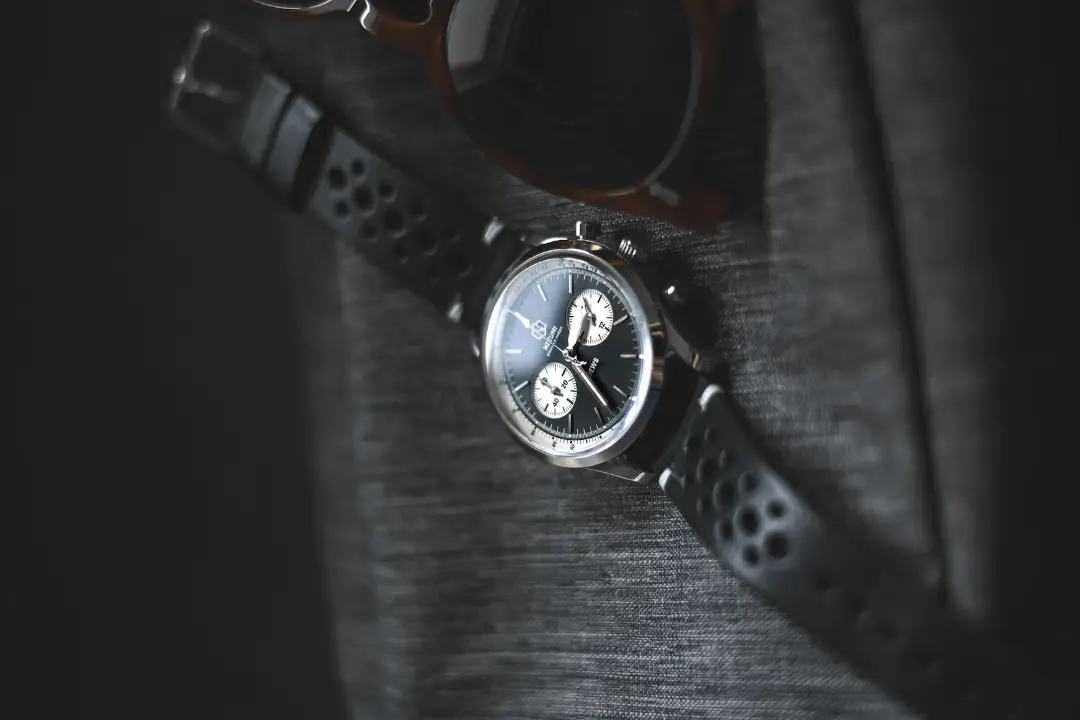The world of watches offers a multitude of functionalities and among them, the tachymeter particularly stands out. This device integrated into certain watches makes it possible to measure the average speed over a given distance. On this page, we invite you to discover more about this mechanism and its use.
What is a tachymeter?
The tachometer is a measuring instrument used to calculate the average speed of a moving object over a certain distance. Most of the time, this function is integrated into chronograph watches (watches equipped with a device for measuring the elapsed time).
This is usually a scale inscribed around the bezel or dial of the watch, allowing the average speed to be read directly in kilometers or miles per hour.
Operation of the tachymeter
The basic principle of the tachometer is based on a simple rule of three. When the user triggers the chronograph at the same time as the start of the event to be measured (for example, the departure of a car), he can stop the chronometer and directly read the average speed on the tachymeter scale.
Speed measurement
Let’s take a concrete example: you want to measure the average speed of a car over a distance of 1 kilometer. You start the chronograph when the car passes in front of you and stop it when it has covered the 1000 meters. Suppose the measured duration is 30 seconds; the tachometer reading will then directly give you the average speed in km/h for this distance:
- If the chronograph hand points to the number 120, this means that the car has been traveling at an average speed of 120 km/h.
- If the needle points to the number 60, then the average speed is 60 km/h, and so on.
Note that the tachymeter does not measure the instantaneous speed but the average speed.
Distance measurement
It is also possible to use the tachymeter to calculate the distance traveled by a moving object by knowing its constant speed. To do this, simply reverse the process:
- Trigger the chronograph when the object begins to move.
- When the hand reaches the number corresponding to the speed of the object, stop the chronograph.
- The duration displayed then represents the time required to cover 1 kilometer (or 1 mile) at this constant speed.
The different types of tachymeters
There are several types of tachometers, which are distinguished in particular by their scale and their method of reading:
Linear tachymeter
This type of tachymeter is often integrated into old or vintage watches. It comes in the form of a graduated scale inscribed on the dial of the watch. The average speed is read by following the chronograph hand and noting its position on the scale.
Circular tachymeter
The circular tachymeter is arguably the most common on modern watches. Here, the scale is inscribed around the bezel or dial of the watch, forming a complete circle. The reading is carried out in the same way as for the linear tachometer, by following the needle and identifying its position on the scale.
Digital tachymeter
Some models of electronic watches also offer a digital tachymeter. In this case, the measurement of the average speed is carried out automatically and is displayed directly on the screen, generally in km/h or in mph according to the user’s settings.
Tips for using your tachymeter properly
Here are some tips for getting the most out of your tachometer:
- Make sure you know the scale of your tachometer (kilometres or miles) before using it.
- For more accurate measurement, try to start and stop the chronograph as quickly as possible at the start and end of the event to be measured.
- Keep in mind that the tachometer measures average speed, not instantaneous speed. There may therefore be speed variations during the measured event.
- Do not hesitate to practice to familiarize yourself with the reading of your tachometer and its operation.
In summary, the tachymeter is an interesting and practical measuring instrument, integrated into certain chronograph watches. In particular, it allows you to calculate the average speed of a moving object over a given distance, which can be very useful in various situations, such as during sporting events or car journeys.
Remember to be familiar with the scale and specifics of your tachometer to get the most out of it!
